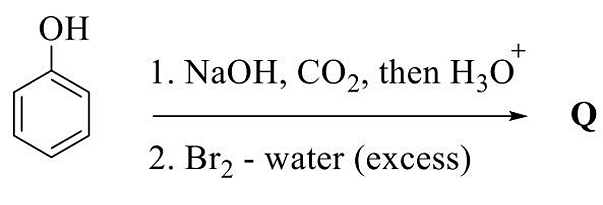The following are the processes occurring during flame atomization in atomic absorption spectrometry:
(i) Volatilization (ii) Ionization
(iii) Nebulization (iv) Desolvation
(v) Dissociation
Arrange the processes in sequential order and choose the correct answer from below:
(i) Volatilization (ii) Ionization
(iii) Nebulization (iv) Desolvation
(v) Dissociation
Arrange the processes in sequential order and choose the correct answer from below:
- (iii), (ii), (i),(iv), (v)
- (iii), (iv), (v), (ii), (i)
- (i), (iii), (iv),(ii), (v)
- (iii), (iv), (i), (v), (ii)
The Correct Option is D
Solution and Explanation
To accurately arrange the processes involved in flame atomization in atomic absorption spectrometry, we first need to understand each step's role in the sequence:
- Nebulization: The sample solution is converted into a fine aerosol mist. This is the first step as the sample must be prepared in such a fine mist to be introduced into the flame.
- Desolvation: The solvent in the aerosol droplets is evaporated, leaving behind dry solute particles. This step follows nebulization to prepare the sample for further atomization.
- Volatilization: The dry solute particles are then vaporized to form free atoms (or molecules) in the gas phase. This needs to happen after the solvent has been removed.
- Dissociation: After volatilization, molecules in the vapor can dissociate into free atoms, which are necessary for atomic absorption spectrometry.
- Ionization: Finally, some of the atoms may ionize. However, ionizing too many atoms can affect absorption measurement, and often, conditions are adjusted to minimize this process for accurate readings.
Thus, putting these processes in the correct sequence gives us: (iii) Nebulization, (iv) Desolvation, (i) Volatilization, (v) Dissociation, (ii) Ionization.
The correct answer is: (iii), (iv), (i), (v), (ii).
This sequence ensures a properly prepared sample for accurate atomic absorption spectrometry, addressing both physical and chemical steps needed to measure the concentration of elements accurately.
Top Questions on Mass spectrometry
- The major product in the given reaction sequence is Q. The mass spectrum of Q shows
([M] = molecular ion peak)
- GATE CY - 2024
- Inorganic Chemistry
- Mass spectrometry
- Recombination of electron-hole produces ____ in LEDs.
- AP PGECET - 2024
- Instrumentation Engineering
- Mass spectrometry
- Which among the following characteristics of Laser light specifies the precise movement of all individual light waves together through time and space?
- AP PGECET - 2024
- Instrumentation Engineering
- Mass spectrometry
- Magnetic sector analyzer is a part of
- AP PGECET - 2024
- Instrumentation Engineering
- Mass spectrometry
- Which ionization technique in mass spectrometry is most suitable for large biomolecules like proteins:
- GPAT - 2024
- Pharmaceutical Analysis
- Mass spectrometry
Questions Asked in GPAT exam
- How much volume of Raw spirit can an excise officer withdraw as sample?
- GPAT - 2025
- Indian Pharmaceutical Industry- An Overview
- Which parasitic worm is responsible for causing lymphatic filariasis?
- GPAT - 2025
- Organic Chemistry
Match the following:
(P) Schedule H
(Q) Schedule G
(R) Schedule P
(S) Schedule F2
Descriptions:
(I) Life period of drugs
(II) Drugs used under RMP
(III) List of Prescription Drugs
(IV) Standards for surgical dressing
- GPAT - 2025
- Drug therapy
- Blood concentration ratio of the combination of trimethoprim and sulfamethoxazole after being given in a 1:5 ratio is
- GPAT - 2025
- antimicrobials
- Which of the following alkaloids are found as salts of meconic acid?
- GPAT - 2025
- Introductory Pharmacognosy